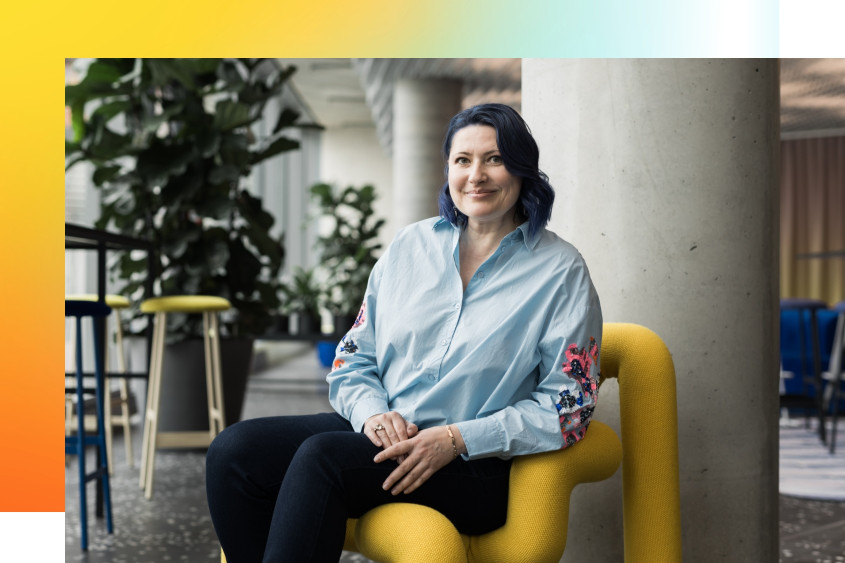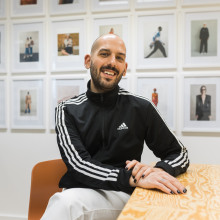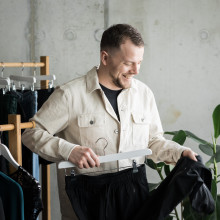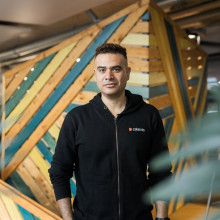Style for Everyone:
Adaptive Fashion takes center stage
Style for Everyone:
Adaptive Fashion takes center stage
Discover how Zalando's Senior Product Manager, Galina Charni, and her team are paving the way for Adaptive Fashion to take a front-row seat, enabling a truly inclusive shopping experience for people of all abilities.
Discover how Zalando's Senior Product Manager, Galina Charni, and her team are paving the way for Adaptive Fashion to take a front-row seat, enabling a truly inclusive shopping experience for people of all abilities.

Zalando has committed to providing a truly inclusive assortment and experience for underrepresented groups by 2025. Galina Charni and her team are driving the efforts to enable disabled customers and caregivers to shop for adaptive fashion on Zalando. We caught up with her to learn about what it takes to reimagine truly inclusive and accessible fashion for everyone.
Hi Galina, what’s your role at Zalando?
I’m a Senior Product Manager of Diversity & Inclusion (D&I) within the Design, Marketing, and Content team. I work on the team responsible for improving the shopping experience for customers of Adaptive Fashion – a collection that’s been available since September 2022.
What D&I challenges are you and your team solving at the moment?
We're addressing a very real pain point for disabled people: fashion that looks like fashion and which is adapted to the needs of disabled people is scarce, expensive, and hard to find. We’re refining the entire shopping experience for them, from Adaptive Fashion assortments and accessibility to representation.
Can you explain the term “Adaptive Fashion”?
In general, Adaptive Fashion refers to clothing, footwear and accessories catering to the needs of disabled people. It’s intentionally designed to be accessible for people living with permanent or temporary impairments of different kinds such as limited mobility and limited dexterity, as well as sensory sensitivity.
I’m proud that Zalando is one of the few international fashion retailers to offer Adaptive Fashion. We launched our first Adaptive Fashion collections in 25 markets in 2022, consisting of clothing, footwear and accessories. The adaptive assortment is absolutely unique, it offers style, innovative adaptations and very fair prices. For example, seated designs for wheelchair users, sensory-friendly fabrics, pieces that can be closed easily, and styles that fit with prosthetics or bandages. All items can also be discovered on our dedicated Adaptive Fashion Hub to make them easier to find. The whole team and I are passionate about enabling customers with various adaptive needs to discover and assess the assortment.
With so much need for improvements in the Adaptive Fashion space, how do you decide what to work on first?
By listening to disabled customers and co-creating experiences with experts in the disability community. Embedding feedback into the adaptive customer journey is critical to our strategy. Adaptive customers are really interested in giving feedback because they see it as a way of helping their community.
In one of our user interviews we observed a wheelchair user with mobility issues scrolling through the catalog and missing out on great adaptive products because neither the main image nor the product name showcased the main adaptive feature. We’ve realized that before raising awareness around our adaptive assortment, we need to make sure that when customers arrive at our Adaptive Fashion Hub and view our Product Detail Pages, they’re able to navigate everything easily and see whether the products are right for them.
That said, the lack of data is a challenge. We can’t know whether people who buy Adaptive Fashion from us are actually the ones with adaptive needs. Getting more direct feedback on our customer journey from disabled people is crucial for us to improve both our assortment and the on-site experience.

We have integrated adaptive fashion as an integral part of our Zalando assortment. In doing so, we are redefining style inclusivity.
Galina Charni, Senior Product Manager
What achievements of 2023 are you and your team most proud of?
Our main focus was on making it easier for Zalando customers to discover fashion items with adaptive qualities, such as magnets and pull-up loops. We introduced the “Adaptive Features” filter in our catalog. It’s not just a feature flag; it serves as an entryway to fashion freedom for our customers with disabilities. Together with our colleagues from content marketing and studios, we also added new images and descriptions next to the items in a dedicated module that showcases their adaptive features. For instance, you can identify whether a product has been designed specifically for wheelchair users or how the product is suitable for people with skin sensitivities.
How are Zalando customers responding to these changes?
Some customers have shared positive feedback with us on how we’re presenting Adaptive Fashion. By showcasing these collections as integral parts of Zalando's range rather than as niche offerings, we're redefining style inclusivity. In our ongoing collaboration with content marketing, we plan to work with more adaptive and disabled models in both our specialized and mainstream Zalando campaigns.
There's a growing appreciation for Zalando’s commitment to Adaptive Fashion also with customers without disabilities. They welcome broader representation, celebrating diversity in disabilities — particularly those not immediately apparent — alongside our commitment to inclusivity across sizes, ethnicities, and genders.
What’s your personal motivation for making fashion more inclusive?
I’ve always loved fashion! But what I don’t like are the divisive or exclusionary sides of the industry. I learned about Adaptive Fashion through the experiences of my loved ones, and it was a trial-and-error path of discovery that demanded time, effort, and money. My ambition was to contribute to making the products, the representation, and the digital shopping experience more inclusive. When I got the chance to join the team at Zalando driving the Adaptive Fashion project, I jumped at the opportunity.
What changes do you hope to see in D&I at Zalando and across the fashion industry in the future?
The fashion industry should be an equal-opportunities industry, not just in terms of employment but in representation and assortment. Imagine this: campaigns featuring people of different sizes, ethnicities, walks of life and abilities, a person with grip difficulties or low vision would open the Zalando app that would be 100% compatible with the assistive technology they’re using, and they’d easily be able to find a stylish outfit from the “easy to dress” adaptive collection. The parcel would be delivered, and the delivery person would actually wait for the customer to get to the door instead of leaving it two floors down and making it really hard for the customer to pick it up. Then the customer would be able to review the product, helping others with the same needs to make a decision and even request an additional adaptation provided by the Zalando post-purchase care service. I want to contribute to an experience that puts people at the center like that!
Read other stories



